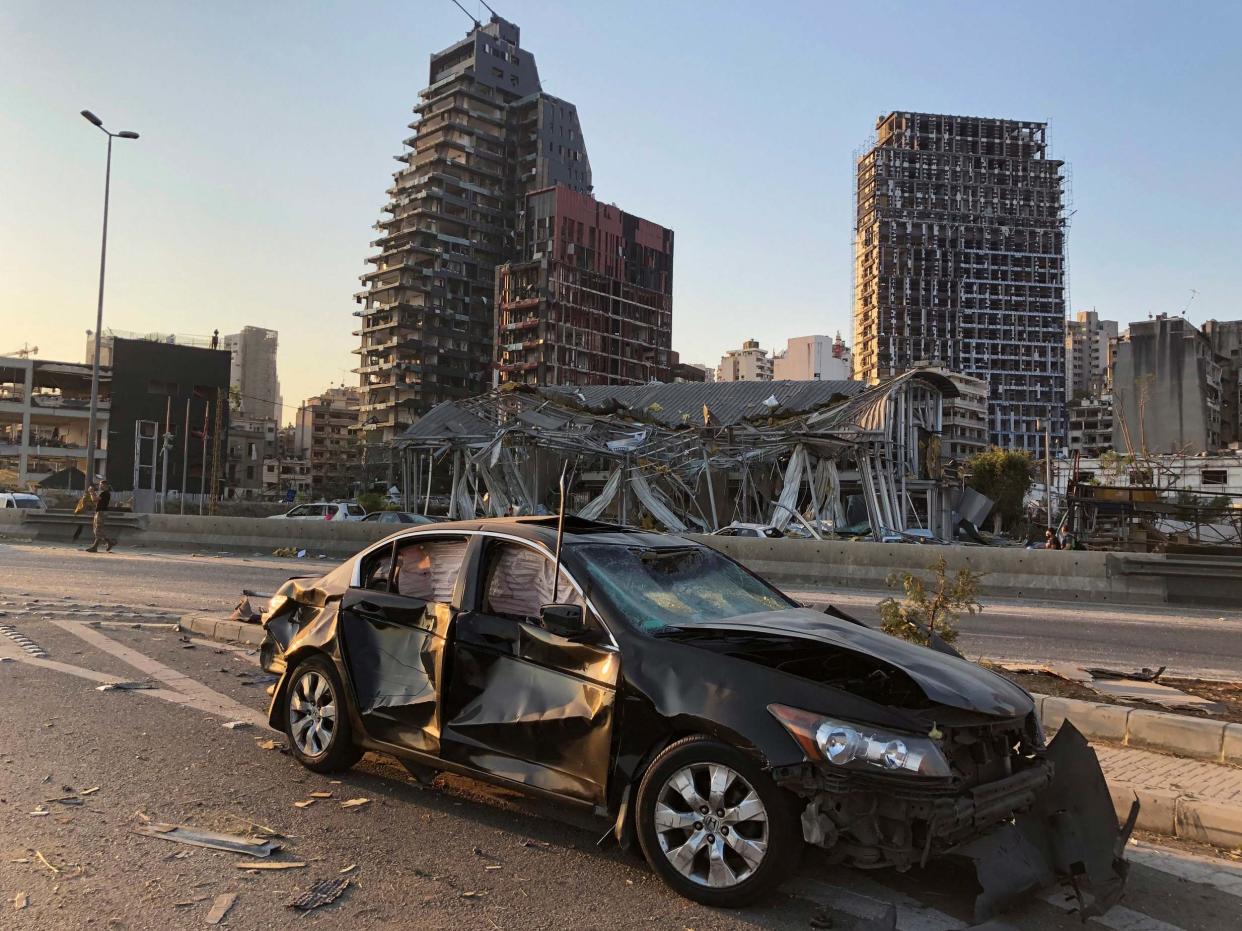Beirut explosions: Death toll reaches 100 with over 4,000 wounded after deadly blasts

The death toll from a huge explosion that rocked Beirut on Tuesday has reached 100, the Lebanese Red Cross has said, and more victims are under the rubble.
The organisation told Lebanese TV the Red Cross was coordinating with the health ministry for morgues to take victims because hospitals were overwhelmed.
On Wednesday morning, smoke was still rising from the port where a towering grain silo was shattered.
Major streets in the city were littered with debris and damaged vehicles, and building facades were blown out.
Shopkeepers and residents spent the morning sweeping the streets which were carpeted in broken glass and pieces of metal. Many, already struggling with an unprecedented financial crisis in Lebanon said they had no idea how they were going to fix the damage.
“I don’t know where I’m going to live, there are holes in the walls of my home where the windows once were, meanwhile my shop is destroyed,” one man who ran a mobile shop 1km from the blast, told The Independent.
“Extended family members who live closer to the port are still missing. People are frantically checking hospitals right now.”
Many were left homeless by the blast, and some residents said their destroyed homes had been burgled in the night as their windows and doors were blown open.
It remains unclear what caused the largest blast, which appeared to have been triggered by a fire near a storage facility housing volatile chemicals.
The explosion struck with the force of a 3.5 magnitude earthquake, according to Germany's geosciences centre GFZ, and was heard and felt as far away as Cyprus, more than 180 miles across the Mediterranean.
It sparked further fires, overturned cars and blew out thousands of windows and doors.
It was the most powerful explosion ever seen in the city, which was on the front lines of the 1975-1990 civil war and has endured conflicts with neighbouring Israel and periodic bombings and terror attacks.
The devastating explosions came as the city’s hospitals were already confronting a surge in coronavirus cases, and there are now major concerns the virus could spread further as thousands of injured people flood into hospitals.
Interior Minister Mohammed Fahmi told a local TV station it appeared the blast was caused by the detonation of more than 2,700 tons of ammonium nitrate that had been stored in a warehouse at the dock since being confiscated from a cargo ship in 2014.
Witnesses reported seeing an orange cloud which appears when toxic nitrogen dioxide gas is released after an explosion involving nitrates.
Videos showed what looked like a fire erupting nearby moments earlier, and local TV stations reported a fireworks warehouse was involved. The fire appeared to spread to a nearby building, triggering the explosion, sending up a mushroom cloud and generating a shock wave.
Additional reporting by agencies
Read more
Search for survivors as Beirut wakes up to huge devastation- updates
Former aide slams Trump for 'spitballing' cause of Beirut blasts
Doctors treat wounded amid destroyed hospitals after Beirut blast

